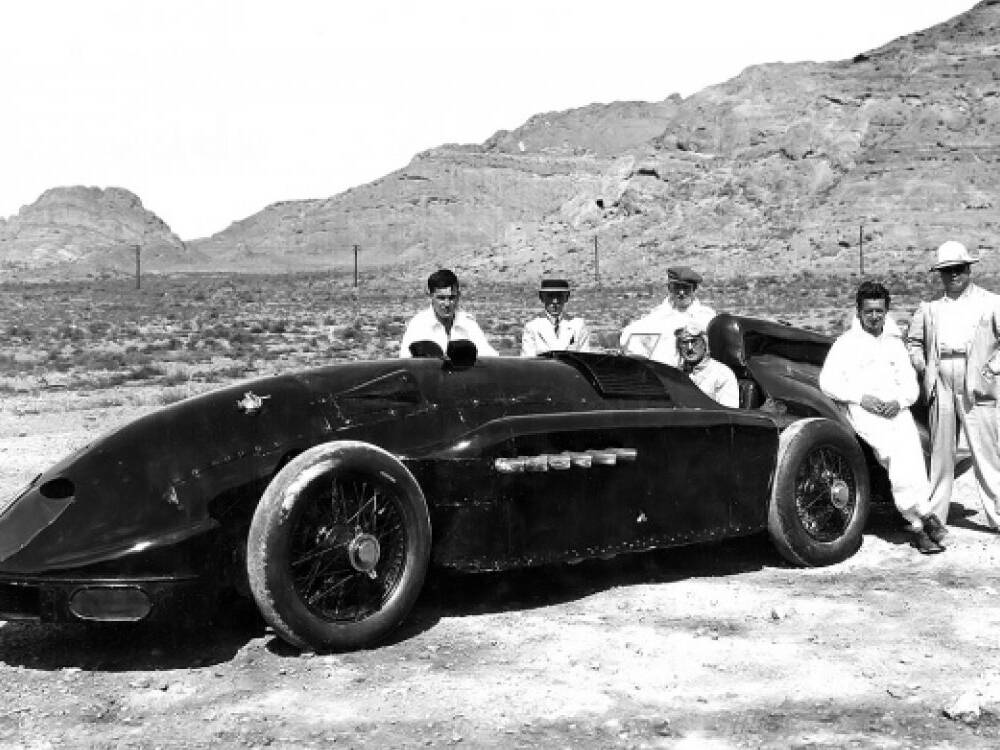Rolls-Royce, George Edward Thomas Eyston and his Speed of the Wind
In the early 1930s, speed record competitions were big business, and for the driver, it meant being on top until someone could beat the record, not just until the next race.
So in 1934 Eyston, together with his manager, decided to build a car to break speed and endurance records, between 1 and 48 hours. That car would be the Speed of the Wind, and its engine… a Rolls-Royce Kestrel V12 of 21.2l and about 500hp, mounted up front position and moving the front wheels.
At the time, 500hp front-wheel drive wasn’t the standard, but Eyston thought that configuration would be more stable on oval circuits in those endurance tests. So, after testing the vehicle at Brooklands, in 1935 he sent it to Bonneville for a trial run.
On September 6, 1935, they set four new records, until problems with the transmission prevented them from continuing the tests. Still, 10 miles at 167mph, 100Km at 161mph, 100 miles at 159mph and 159.3 miles in one hour.
On September 16 and 17, Eyston and his teammates set a record of 12 hours (231.7kmh), 5000km at 226kmh and an average of 226kmh in the 24 hours.
That might be enough for some people but Eyston returned to Bonneville in 1936, this time with two engines. The novelty was a 19.2l 340hp V12 diesel, designed by Harry Ricardo and built by Rolls-Royce (renaming the car Flying Spray), with which he broke the record for the flying kilometer (159.1mph) and flying mile (158.87mph), records that would stand until 1950!
If that was not enough, they reinstalled the Rolls-Royce Kestrel petrol V12, and after improving on their previous records, on July 14th 1936, they reset their record of 5000kms (150.2mph), 24 hours at 149.1mph, a new record of 10000kms at 137.45mph and a record of 48h, at 136.34mph and a total of 10533kms, proving the reliability of the Rolls-Royce engine.
Eyston would not stop running, and continued to use Rolls-Royce engines, but we leave that for the next story.


